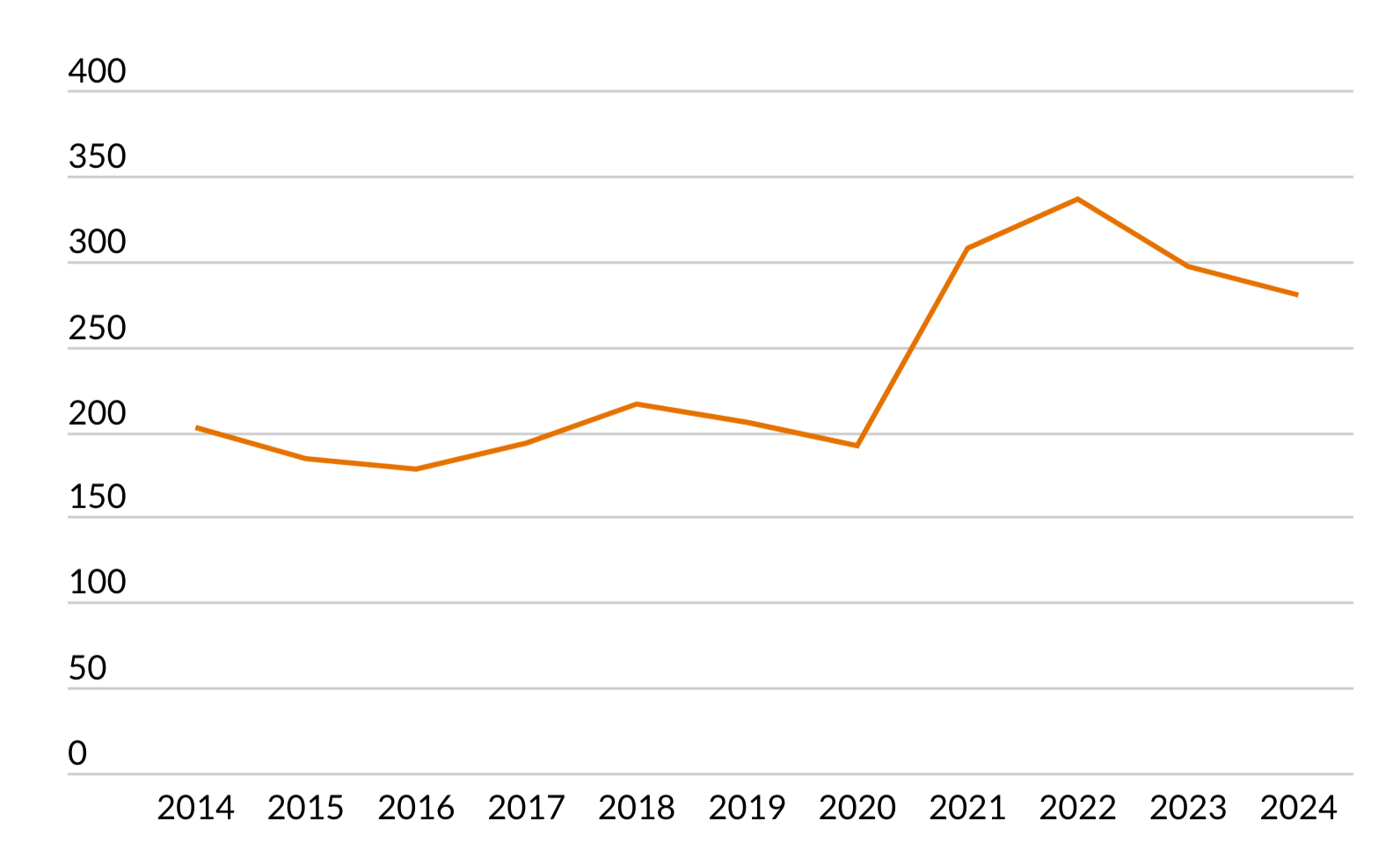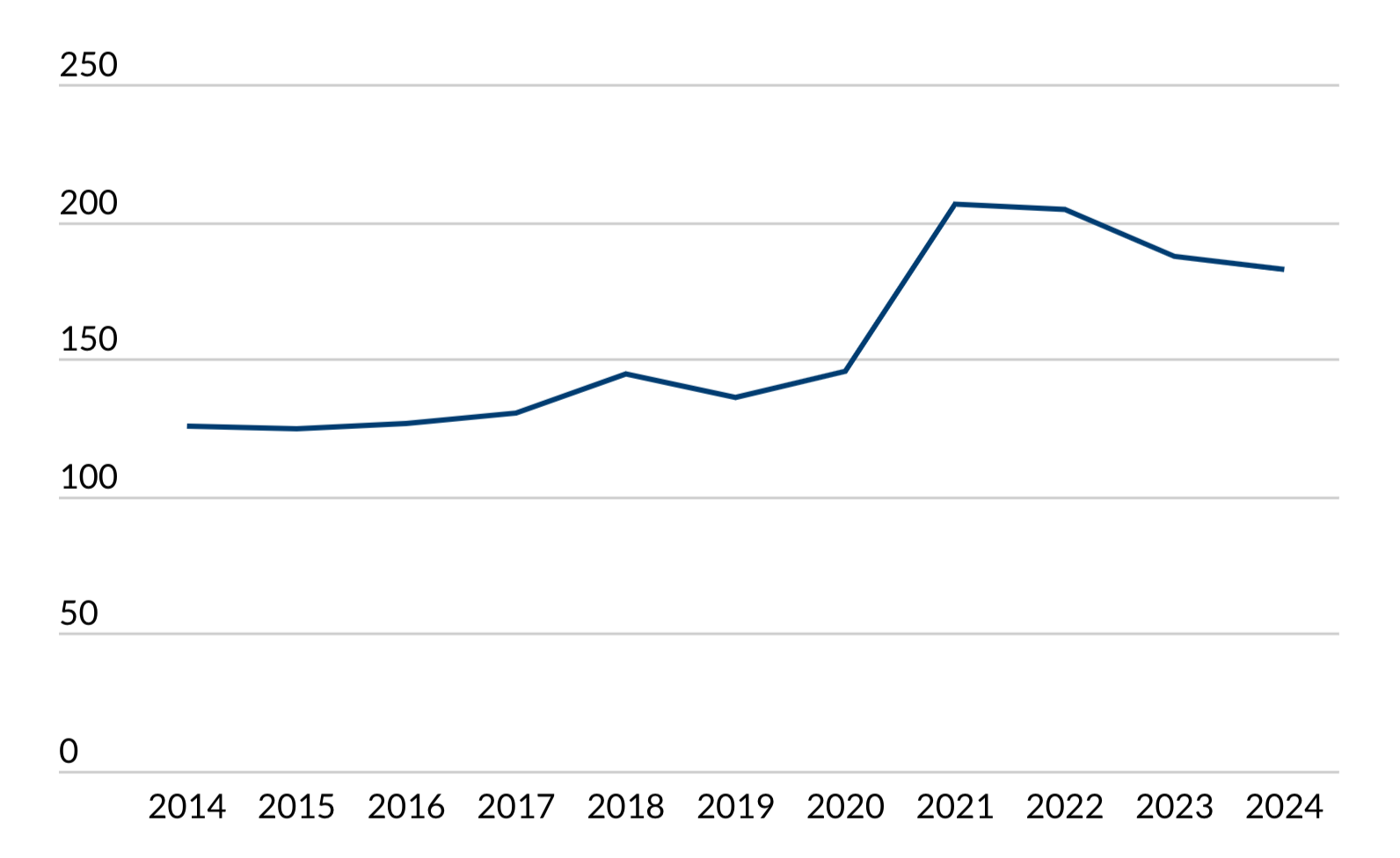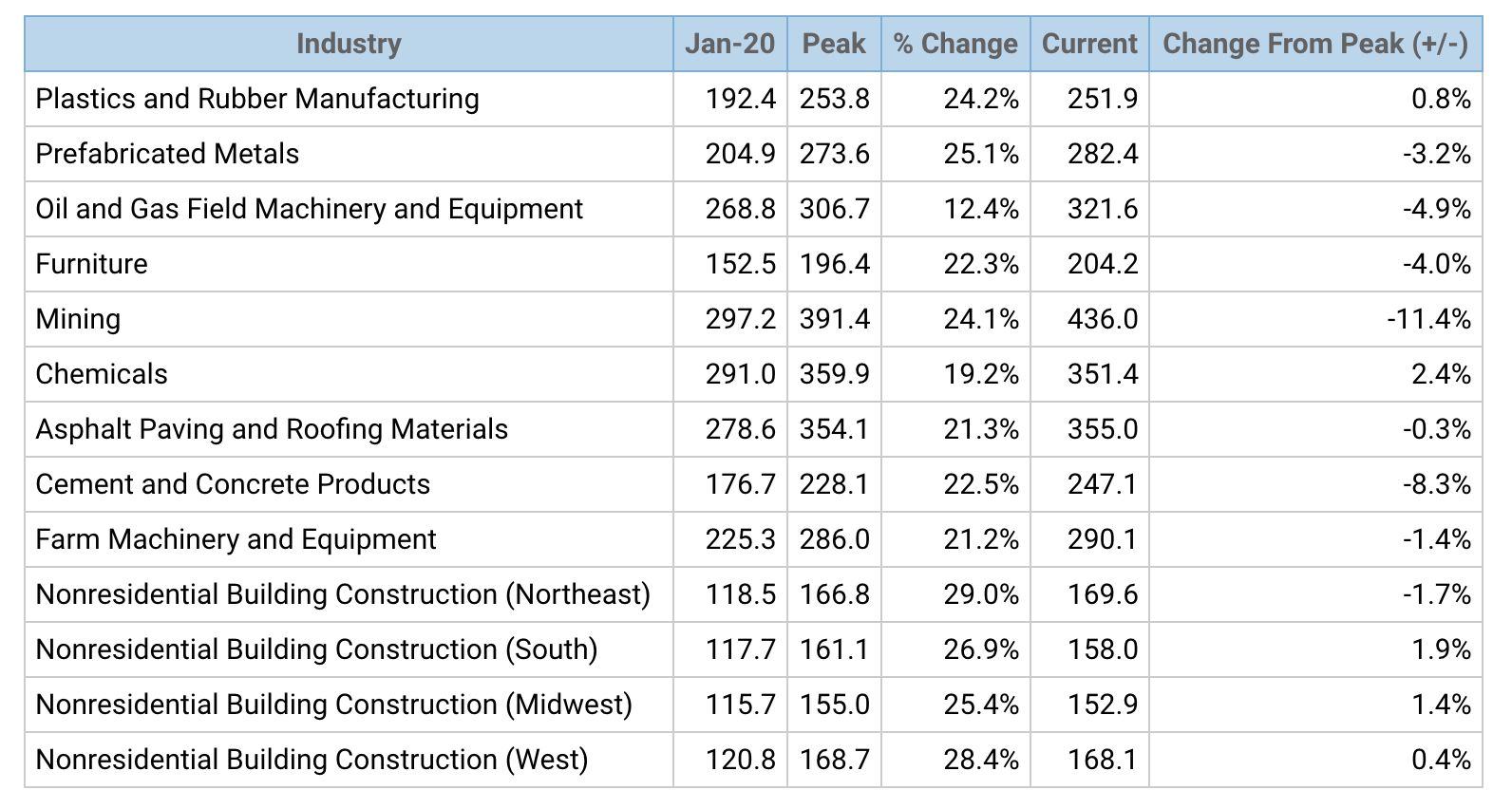The purpose of this article is to provide an update regarding the valuation issues facing companies, risk managers, and brokers who either oversee or insure complex properties. We will examine the significant changes in the insurance market in recent years as the global economy continues to recover from the effects of the COVID-19 pandemic, the resulting inflation, the geopolitical unrest, and the economic policy initiatives.
A CONTINUED CONFLICT AND TEPID RECOVERY
Global markets are continuing to grapple with the effects of the COVID-19 pandemic, albeit with less severe implications. Supply chain disruptions and labor constraints have largely been mitigated now that state-mandated lockdowns and other health measures are well in the rearview mirror. Fiscal and monetary policy enacted across the globe in 2020 and 2021 to lessen the economic blow of the pandemic may have had a degree of success in achieving that goal but may have also contributed to stimulating many global economies into high levels of price inflation in the years following the pandemic.
As a result of the aggressive monetary policy across the globe, inflation for certain goods and services has been trending to pre-COVID levels in many markets. However, a return to normal for the insurance market has been slow as brokers, risk managers, and other stakeholders account for the variable inflationary trends for specific categories of assets and commodities.
The ongoing military conflicts in Ukraine and the Middle East continue to impact the global economy. Prices for commodities such as oil and natural gas remain elevated, specifically in European markets that historically relied heavily on Russian natural gas, although many European nations have sought out other foreign sources for energy.
Core inflation has been declining from the highs of 2022 and early 2023. The overabundance of money supply decreased the purchasing power of the US dollar that led to price hikes and unprecedented demand for certain products. There remains vigorous debate as to whether the Inflation Reduction Act is a net positive for the economy or if it has been responsible for slower rates of inflation. Jason Furman, a Harvard university economist, states, "I can't think of any mechanism by which [the Inflation Reduction Act] would have brought down inflation to date."1 Despite these conflicting views, core inflation has been steadily declining since the passage of the legislation from 8.3 percent to 3.2 percent as measured by the consumer price index. 2
INFLATION: A COMPLICATED STORY
In the immediate aftermath of the pandemic, inflation reached unprecedented levels for products in the steel, oil and gas extraction, and metals industries. At the time of writing (August 1, 2024), messaging from the Federal Reserve suggests likely cuts for interest rates in response to the expectation of the further reduction of inflationary pressures. Core inflation has likewise trended toward normalization as a result of the efforts by central banks across the globe to rein in inflation. However, core inflation can often be misleading when juxtaposed with a more granular analysis of various goods and services.
The steel manufacturing industry has seen a dramatic decrease in both pricing and demand. China, which has long been the world's largest consumer and producer of steel products, has experienced softening demand for new construction projects. For the first time in decades, Chinese steel manufacturers reduced production by 3 percent in the first half of 2024.3
The headwinds facing the Chinese steel industry are being felt by other nations as well. In a recent survey conducted by World Steel of the 10 largest steel-making nations, only Germany (8th) and Iran (9th) increased output in the first half of 2024.4 The decline in steel production and prices can be directly attributed to the glut of supply thrust onto the market as the industry raced to meet customer demands during the height of the pandemic. In the short term, the implications for insurers is the risk of utilizing trailing data that reflects the elevated steel prices of 2022 and 2023 and potentially overestimating loss recovery costs in the current environment.
The plastics industry was similarly impacted by inflation with unprecedented supply and demand imbalances coming out of the pandemic and a return to normalization. According to information published by the Bureau of Labor Statistics (BLS) last year, the plastics industry and resin manufacturing prices have fallen nearly 11 percent from 2022 figures.5 Utilization is also declining for domestic plastics producers. Capacity utilization among plastics producers in 2023 averaged 77.4 percent, a 5.7 percent decline from the previous year according to data gathered by the Plastics Industry Association. These downward trends suggest that inflation equipment associated with the plastics industry is softening.
While steel and plastics have returned to pre-COVID levels of inflation, other industries remain elevated. Oil and gas extraction has yet to normalize. As of July 2024, the domestic Producer Price Index (PPI) for oil and gas extraction is up 3.67 percent from the previous month and almost 15 percent from 2023. While the correlation between commodity pricing and the costs for oil and gas extraction can be analogous, PPI data suggests there is a significant delta that has yet to return to pre-COVID levels.
Metals manufacturing has also been slow to recover from the inflationary highs in the immediate years following the pandemic. The PPI index for metals manufacturing rose 48 percent in the 3-year period ending in December 2022. The following chart illustrates the rapid increase and slow regression in the PPI index for metals manufacturing.
PPI METALS MANUFACTURING (2014–2024)

Source: Bureau of Labor Statistics, PCU331-331, PPI industry subsector data for primary metal manufacturing (2020–2024).
Wood product manufacturing is also struggling with high inflation. BLS data for 2020–2022 show the price change for wood product manufacturing rose 66 percent, due in large part to increased price of raw materials, labor costs, and demand. The following PPI chart suggests a similar pattern with the metals manufacturing index with marginally less inflation in recent years.
PPI Wood Product Manufacturing (2014–2024)

Source: Bureau of Labor Statistics, PCU321-321, PPI industry subsector data for wood product manufacturing, not seasonally adjusted.
These industries are a microcosm of the broader global economy and the fractured response by both producers and customers. While some industries have been relatively quick to recover, others are still struggling to adapt to the "new normal."
The below table of BLS index data illustrates the substantial variances in inflationary trends for specific asset categories at various points over the last 4 years.6

LIABILITY RISK AND EXPOSURE
It is vital for property insurers to understand the specifics of asset classes and their relationship to inflation. Using core inflation or other broad-based inflationary metrics could lead to replacement cost values that are not accurate. Further, it is equally important to have current information. As clearly illustrated, the relationship between inflation and various industries is fragmented. Relying on core inflation or broad-based inflationary data may not accurately reflect the dynamics of specific products. Property insurers should be aware of current trends to avoid potential liability risks for both underexposure and overexposure in the event of a loss.
OUTLOOK FOR 2025
The complex property insurance market continues to show signs of normalization, with premium increases expected to return to pre-COVID levels of approximately 5 percent on an annualized basis but with the caveat that certain markets and industry verticals experience greater or lesser degrees of pricing changes.7 As noted in this article, there will be various products and industries that will face inflationary headwinds, but most industries are slowly moving toward historically normal annualized rates of inflation. A qualified value appraisal can help mitigate some of the potential liabilities and risks outlined herein.
Opinions expressed in Expert Commentary articles are those of the author and are not necessarily held by the author's employer or IRMI. Expert Commentary articles and other IRMI Online content do not purport to provide legal, accounting, or other professional advice or opinion. If such advice is needed, consult with your attorney, accountant, or other qualified adviser.
1 Josh Boak and Paul Wiseman, "Inflation Is Down, but the Inflation Reduction Act Likely Doesn't Deserve the Credit," PBS News, August 16, 2023.
2 Diccon Hyatt, "A Year Later, the Inflation Reduction Act Likely Hasn't Reduced Inflation—but Give It Time," Investopedia, August 17, 2023.
3 Halina Yermolenko, "China's Steel Industry Reduced Revenue by 4.2% Y/Y in January–April," GMK Center, May 28, 2024.
4 "Weak Demand Drags Global Steel Output," American Machinist, March 24, 2024.
5 Gage Edwards, "Plastics Industry Rates Decrease as Supply Remains Healthy," Waste 360, July 26, 2023.
6 "Databases, Tables and Calculators by Subject," BLS, accessed on August 1, 2024.
7 Thomas Holzheu, "US Property and Casualty Outlook: Dog Days Are over," Swiss Re Institute, June 25, 2024.



